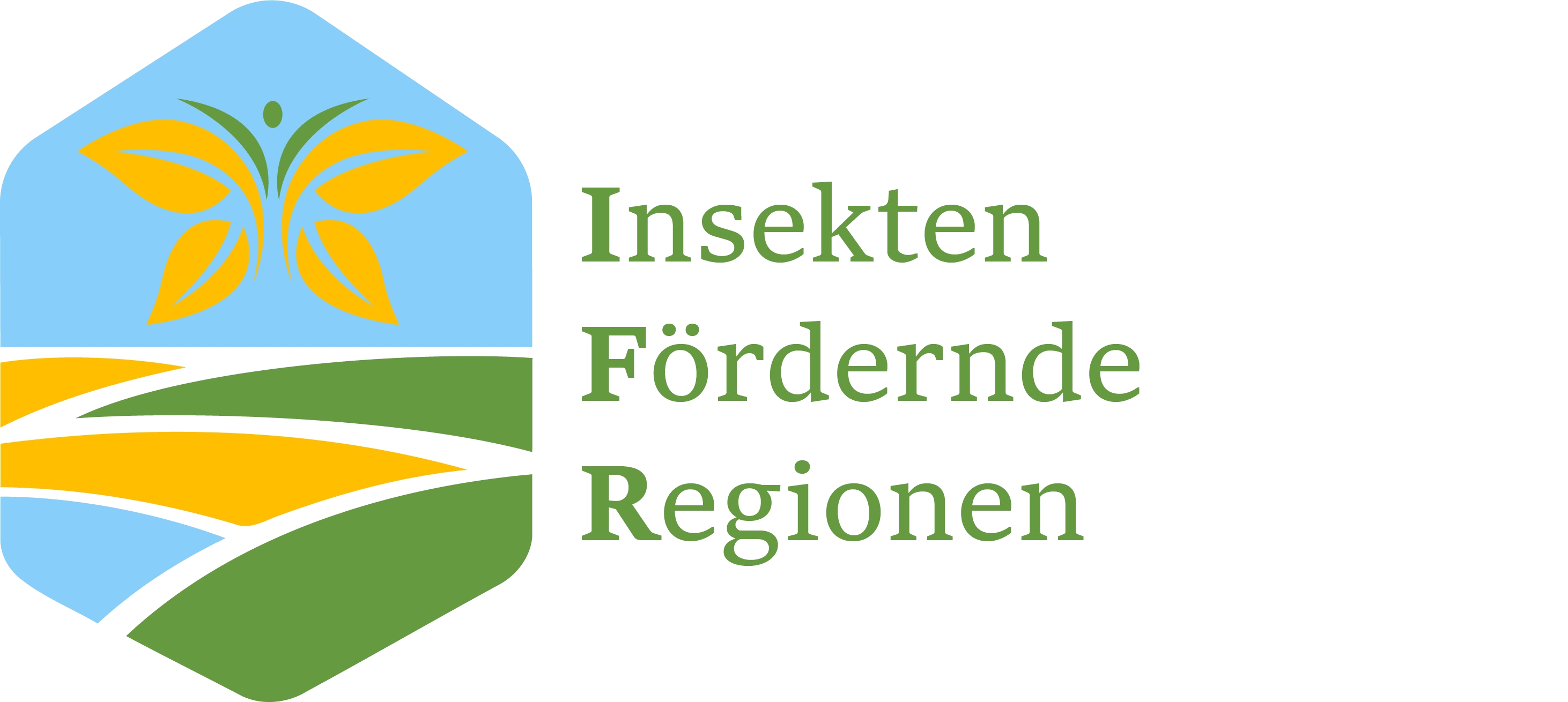The Biodiversity Action Plan (BAP) at landscape level
From a technical perspective, the measures for insect conservation in our Insect-Responsible Sourcing Regions are based on the use of a tool that has already proven its effectiveness many times in other projects: the Biodiversity Action Plan. It is supported by the Biodiversity Performance Tool and the Biodiversity Monitoring System.
Biodiversity Action Plan (BAP) for Insect-Responsible Sourcing Regions
The regional BAP of an insect-supportive region includes two broad lines:
- The protection of existing biodiversity elements and the creation of further potential for biodiversity (habitats, food bases).
- The continued reduction of negative impacts on biodiversity from agricultural activities and other land uses.
The development of a regional BAP is carried out in four steps:
- Analysis of strengths and weaknesses based on the current situation.
- Determining the fields of action and measurable targets for each field of action.
- Selection of measures for the fields of action with responsibilities and time schedules.
- Selection of key figures and indicators for monitoring and definition of the monitoring process.
These are the typical elements of a management process. Protecting and enhancing biodiversity – and specifically insects – requires management that allows the region to respond to the baseline and changing conditions. Biodiversity conservation is about achieving continuous improvement in relevant direct and indirect impacts. For this reason, the BAP also refers to an improvement in the potential for biodiversity or for insects. Whether more biodiversity/insects actually appear on the (agriculturally) used areas after a successful implementation of the BAP depends, among other things, also on factors that cannot be directly influenced by the region, e.g. the effects of climate change.
Duration of a regional BAP: The BAP includes measures that are implemented either in the short term, medium term or long term. It is recommended that the BAP for the region be designed for three to five years.
Implementation of measures: For the regional BAP, the action areas and the measures that will be used to achieve the objectives are defined. These measures need to be broken down to the land use level, e.g., for farms, local governments, or forest owners.
The main focus of the BAP is on the agricultural use of the land, i.e. the participating farms prepare individual BAPs at the farm level, reflecting the agreed measures of the regional biodiversity action plan.
Use of the Biodiversity Performance Tool (BPT)
In an Insect-Responsible Sourcing Region, the Biodiversity Performance Tool (BPT) is used on as many farms as possible. The BPT was developed as part of the Food & Biodiversity initiative and supports farmers in creating a BAP as well as monitoring its implementation.
The BPT collects 78 metrics and indicators on the current status of biodiversity as well as on farming practices. These metrics have direct or indirect relevance to insect conservation. Some further insect indicators will be added. The data can be entered by the farmers themselves or together with an advisor. After entering the initial data, the BPT visualizes the strengths and weaknesses on the farms in terms of biodiversity.
The application of the BPT allows the targeted creation of BAPs that are structured similarly to the baseline and target the farm components with the greatest potential for improvement. Repeated use of the BPT allows the implementation of the BAPs to be tracked and reviewed, and the BAPs can be updated.
Use of the Biodiversity Monitoring System (BMS)
The Biodiversity Monitoring System (BMS) monitors the development of the potential for biodiversity on the basis of aggregated data from farms of an organisation, e.g. a standard organisation or producer group. The system currently records 25 metrics and indicators relevant to biodiversity. Additional insect-specific indicators are added as appropriate. Farm data are collected through the BPT or as part of audits. The input of data can be done by the farmers themselves, by consultants or auditors.
Another level of the BMS to be developed is to check the actual impact on biodiversity. It is planned to record this on the basis of the development of a few regional indicator species. If the populations of the regional responsibility species develop positively, positive conclusions can be drawn for the ecosystem(s).
Indicator species should be selected on a region-specific basis. The expertise of experts is needed for this, as well as for the evaluation of the populations of the selected key species. In this context, the involvement of experts is a cost factor. For this reason, Level 2 monitoring should only occur every 3-5 years on selected farms/areas. These farms should be representative of the region.
